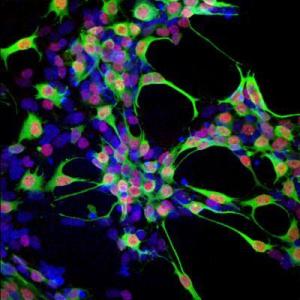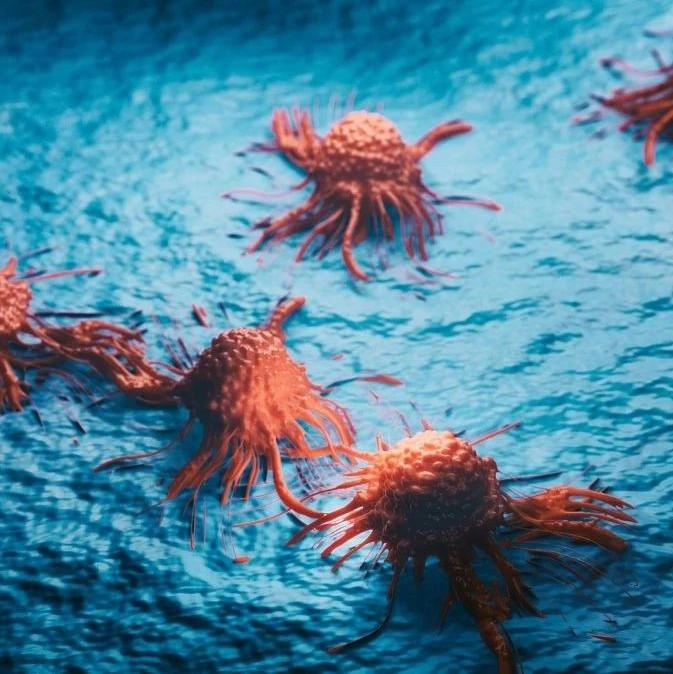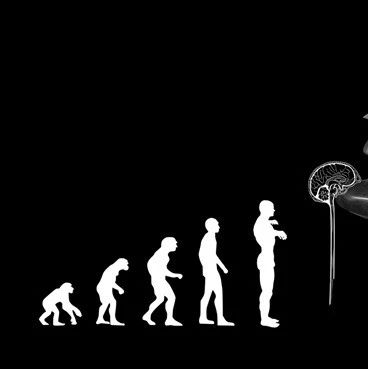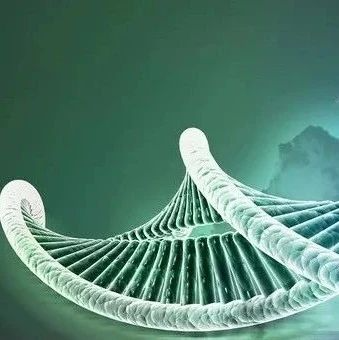研究人员利用先进的干细胞技术治疗由基因缺陷导致的罕见视觉功能障碍。他们开辟了这一有前景的治疗途径,有效的治疗方案将用于扭转失明的病情,后者是由包括黄斑变性症和视网膜色素变性症在内的视网膜炎疾病引起,并危害数以百万的患者。
2011年6月的干细胞期刊网络版发表一项研究,研究人员利用新技术成功诱导多能干细胞(IPS),供体患者是一个患有罕见的遗传性眼部疾病的病人,症状是回旋形脉络膜视网膜萎缩。这一疾病会影响视网膜色素上皮(RPE)细胞的生理功能,后者对视网膜感光细胞起关键协同作用,而视网膜感光细胞的功能是将视网膜的视觉信息传递到大脑特定区域,进而形成视觉图像。
生物专业副教授Jason Meyer博士是该研究论文的第一作者,他说,当筛选出基因修复的IPS细胞,并诱导这类细胞分化成具有正常生理功能的视网膜色素上皮(RPE)细胞,我们感到无比地兴奋,因为这一技术路线不仅表明我们可以修复功能紊乱的器官,而且还支撑一个信念——在未来,我们可利用这一技术产生分化细胞去替换视网膜疾病中功能紊乱和丧失的细胞。
黄斑变性是导致失明的最常见病因,据估计影响全球2500-3000万人。此外,全球一半以上的人受到视网膜色素变性的危害。
因为IPS细胞来自于需要这类细胞的特定病人,因此,它可以避免在移植过程中免疫排斥的问题。在这项研究中,维生素B6也被用于治疗受损的RPE细胞,并产生可正常行使生理功能的健康细胞。视网膜是中枢神经系统中相对容易接触的部分,IPS细胞恢复视力的治疗可在这一区域进行。研究人员希望,一旦修复关于视觉功能障碍的基因缺陷,IPS细胞将应用于恢复视力的治疗。(生物探索译)

人体多能干细胞
生物探索推荐英文原文
Progress Using Induced Pluripotent Stem Cells to Reverse Blindness
Researchers have used cutting-edge stem cell technology to correct a genetic defect present in a rare blinding disorder, another step on a promising path that may one day lead to therapies to reverse blindness caused by common retinal diseases such as macular degeneration and retinitis pigmentosa which affect millions of individuals.
In a study appearing in an advance online publication of the journal Stem Cells on June 15, 2011, investigators used recently developed technology to generate induced pluripotent stem (iPS) cells from a human patient with an uncommon inherited eye disease known as gyrate atrophy. This disorder affects retinal pigment epithelium (RPE) cells, the cells critical to the support of the retina's photoreceptor cells, which function in the transmission of messages from the retina to parts of the brain that interpret images.
"When we generate iPS cells, correct the gene defect that is responsible for this disease, and guide these stem cells to become RPE cells, these RPE cells functioned normally. This is exciting because it demonstrates we can fix something that is out of order. It also supports our belief that in the future, one might be able to use this approach for replacement of cells lost or malfunctioning due to other more common diseases of the retina," said lead study author cell biologist Jason Meyer, Ph.D., assistant professor of biology in the School of Science at Indiana University-Purdue University Indianapolis.
Macular degeneration is the most common cause of blindness, affecting an estimated 25-30 million people worldwide. One and a half million people worldwide are affected by retinitis pigmentosa.
Because iPS cells can be derived from the specific patient who needs them, use of these cells may avoid the problem of transplant rejection. In the study, vitamin B-6 also was used to treat the damaged RPE cells producing healthy cells that functioned normally. The retina is a relatively easily accessible part of the central nervous system, which makes it an attractive target for correction with iPS cells. Researchers are hopeful that once the gene defect responsible for a blinding disorder is corrected in iPS cells, these cells may be able to restore vision.
In addition to Meyer of the School of Science at IUPUI, "Optic Vesicle-like Structures Derived from Human Pluripotent Stem Cells Facilitate a Customized Approach to Retinal Disease Treatment" is co-authored by Sara E. Howden, Kyle A. Wallace, Amelia D. Verhoeven, Lynda S. Wright, Elizabeth E. Capowski, Jessica M. Martin, Shulan Tian, Ron Stewart, Bikash Pattnaik, James Thomson and David M. Gamm, all of the University of Wisconsin; and Isabel Pinilla of Blesa University Hospital and the Instituto Aragones de Ciencias de la Salud in Spain. Meyer is also a primary investigator with the Stark Neurosciences Research Institute at Indiana University School of Medicine. Thomson is also associated with the University of California -- Santa Barbara.







